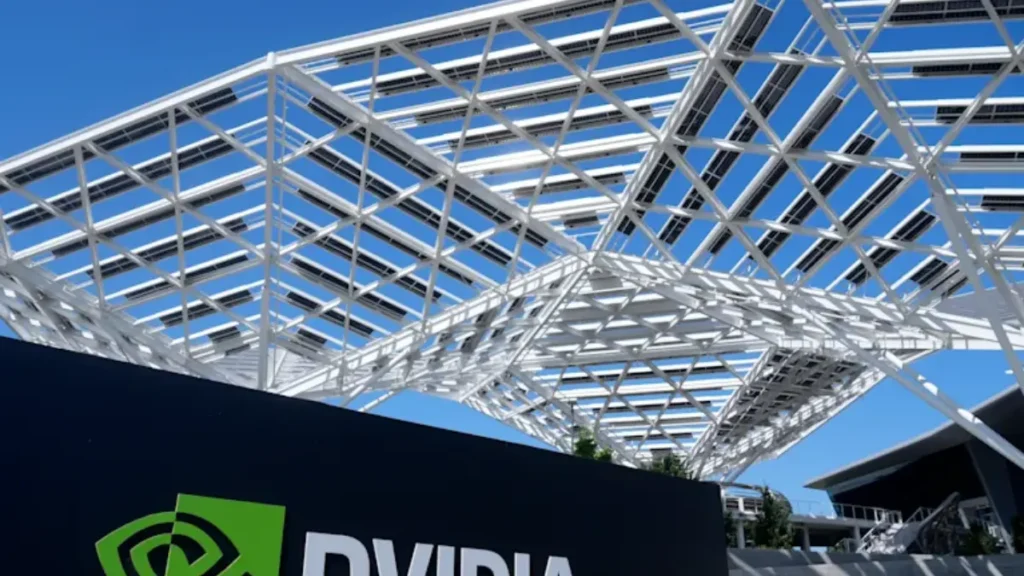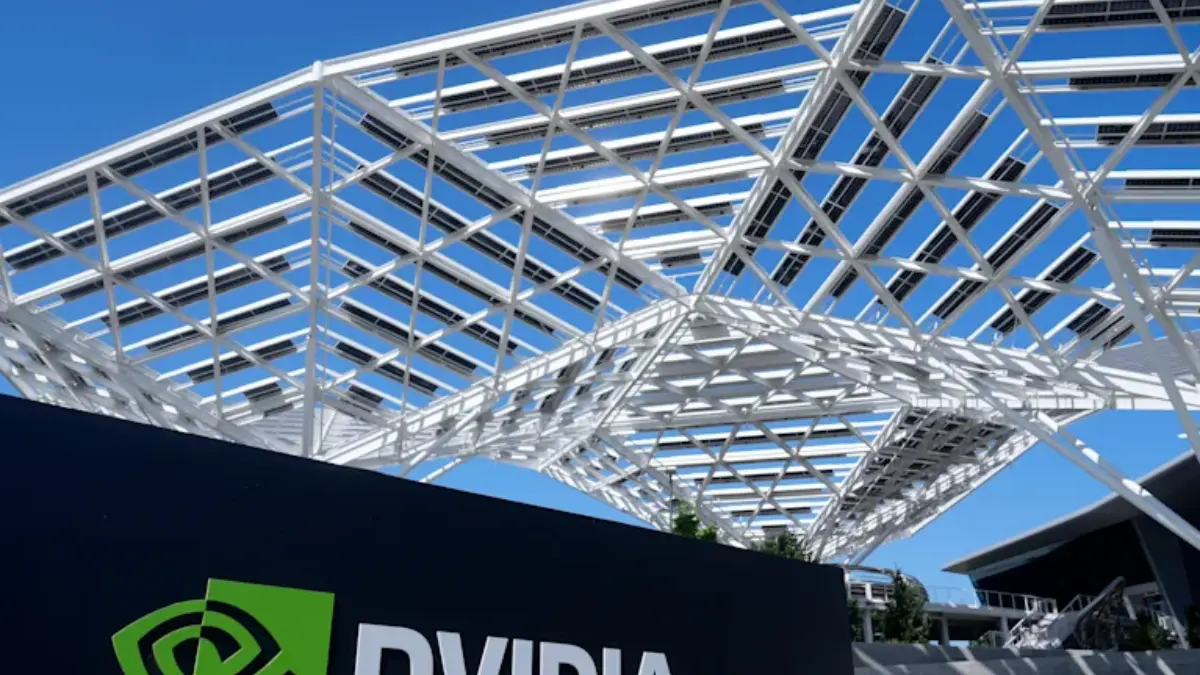Explore why Nvidia stock sinks after data center revenue falls short of estimates in Q2 2025, despite record EPS, Blackwell chip demand, gaming growth, and stock buybacks. Full earnings breakdown and market outlook.
Why Nvidia Stock Sinks After Data Center Revenue Falls Short of Estimates

The headline “Why Nvidia Stock Sinks After Data Center Revenue Falls Short of Estimates” has dominated financial news after Nvidia (NVDA) released its second-quarter fiscal 2025 results. While the company reported record earnings per share (EPS) and revenue, data center sales came just below analyst forecasts, triggering a pullback in after-hours trading.
Investors are carefully examining the mix of strong overall growth, H20 chip sales reductions in China, and extraordinary demand for the next-generation Blackwell GPUs. This report provides a detailed breakdown of Nvidia’s financial performance, data center revenue trends, gaming segment results, stock buyback plans, and the company’s long-term outlook.
Nvidia Q2 FY25 Earnings: Key Metrics
Despite the headline of why Nvidia stock sinks after data center revenue falls short of estimates, the company’s overall performance remains strong.
| Financial Metric | Q2 FY25 Reported | Analyst Expectation | Q2 FY24 (Year Ago) |
|---|---|---|---|
| Total Revenue | $46.7B | $46.2B | $30B |
| Data Center Revenue | $41.1B | $41.3B | $26.2B |
| Adjusted EPS | $1.05 | $1.01 | $0.68 |
| Gaming Revenue | $4.3B | $4.1B | $2.5B |
| Stock Buyback Plan | $60B approved | N/A | N/A |
Even though the total revenue exceeded analyst estimates, the slight miss in data center revenue explains why Nvidia stock sinks after data center revenue falls short of estimates in investor perception.
Data Center Revenue: The Small Miss That Matters
The core reason for why Nvidia stock sinks after data center revenue falls short of estimates is tied to its data center division, the fastest-growing segment of Nvidia’s business:
- Q2 data center revenue: $41.1 billion, slightly below the $41.3 billion expected.
- Approximately 50% of revenue came from large cloud service providers.
- Nvidia CFO Colette Kress highlighted a 1% sequential decline, largely due to a $4 billion drop in H20 chip sales to China.
Although modest, this miss weighed on after-hours trading, leading to a 3% drop in Nvidia shares. Analysts interpret even a slight underperformance in data center revenue as a signal of short-term volatility.
Blackwell Chips Drive Long-Term Optimism
CEO Jensen Huang emphasized the company’s growth potential, particularly with the next-generation Blackwell GPU architecture:
“Production of our next-gen Blackwell chips is ramping at full speed, and demand is extraordinary. The AI race is on, and Blackwell is the platform at its center.”
This statement reassures investors that while Nvidia stock sinks after data center revenue falls short of estimates in the short term, long-term demand for AI computing remains robust and promising.
Gaming Segment: Growth Continues
Nvidia’s gaming segment delivered strong results, partially offsetting concerns in data center revenue:
- Revenue: $4.3 billion, exceeding analyst expectations.
- Year-over-year growth from $2.5 billion indicates solid demand.
- The segment includes GPUs for gaming and smaller-scale AI tasks.
The gaming division remains Nvidia’s second-largest revenue driver, providing a cushion when data center sales underperform.
Stock Buyback Plan: $60 Billion Shows Confidence
Nvidia’s board approved a $60 billion stock buyback program, signaling confidence in long-term growth. While Nvidia stock sinks after data center revenue falls short of estimates in reaction to near-term misses, buybacks are likely to boost EPS and shareholder value over time.
China Sales and Regulatory Impacts
Another reason for why Nvidia stock sinks after data center revenue falls short of estimates is geopolitical uncertainty:
- Earlier restrictions on chip sales to China were lifted, but now Nvidia pays a 15% fee on all China-related sales.
- This policy caused a $4 billion reduction in expected H20 chip revenue.
- U.S.-China regulations remain a source of short-term risk for Nvidia’s data center growth.
Stock Performance and Market Reaction
Despite strong EPS and revenue, markets responded to the data center miss:
- Shares fell 3% in after-hours trading.
- Nvidia is still up 35% year-to-date and over 40% in the last 12 months.
- In July, Nvidia became the first company with a $4 trillion market cap.
The headline of why Nvidia stock sinks after data center revenue falls short of estimates highlights how sensitive the market is to even small misses in high-growth sectors.
Q3 Revenue Forecast and Outlook
Nvidia projects Q3 revenue of $54 billion ±2%, surpassing analyst estimates of $53.4 billion. Growth drivers include:
- Blackwell GPUs powering AI training and inference
- Strong gaming demand
- Cloud service provider contracts
- Strategic stock buybacks supporting EPS
Even though Nvidia stock sinks after data center revenue falls short of estimates, the long-term outlook for AI and GPU computing remains strong.
Comparative View: Nvidia vs. Competitors
| Company | Q2 Revenue | Data Center Focus | Stock Performance YTD |
|---|---|---|---|
| Nvidia | $46.7B | AI chips, GPUs | +35% |
| AMD | $5.9B | AI accelerators, CPUs | +18% |
| Intel | $12.8B | CPUs, limited AI GPUs | +12% |
Nvidia’s scale and dominance in AI computing highlight why Nvidia stock sinks after data center revenue falls short of estimates is a temporary concern, not a long-term trend.
❓ FAQs
1. Why did Nvidia stock drop after Q2 earnings?
The headline why Nvidia stock sinks after data center revenue falls short of estimates reflects a slight miss in data center revenue ($41.1B vs. $41.3B expected), even though total revenue and EPS beat expectations.
2. How much revenue did Nvidia’s gaming segment generate?
Gaming revenue reached $4.3 billion, exceeding estimates and providing a cushion against data center misses.
3. What is the impact of U.S.-China regulations on Nvidia?
The company must pay a 15% fee on China sales, reducing expected revenue from H20 chip exports.
4. What is the Blackwell chip demand situation?
CEO Jensen Huang described demand as extraordinary, reinforcing long-term AI growth despite short-term data center misses.
5. How does Nvidia’s stock buyback plan affect investors?
A $60 billion buyback program supports EPS growth and indicates confidence in long-term performance, even as Nvidia stock sinks after data center revenue falls short of estimates.
6. What are Nvidia’s Q3 revenue projections?
Nvidia forecasts $54 billion ±2%, above analyst estimates, driven by AI, gaming, and cloud sales.
7. How sensitive is Nvidia stock to data center revenue?
High-growth segments like data center revenue significantly influence market reactions, which explains why Nvidia stock sinks after data center revenue falls short of estimates.
8. How has Nvidia performed YTD in the stock market?
Shares are up 35% year-to-date and over 40% in the past 12 months despite the Q2 data center revenue miss.
9. What are Nvidia’s long-term growth drivers?
Blackwell GPUs, AI adoption, gaming, cloud partnerships, and strategic buybacks are the core growth drivers.
10. How does Nvidia compare with competitors like AMD and Intel?
Nvidia dominates AI GPU computing and maintains larger revenue and market cap, demonstrating why short-term concerns like why Nvidia stock sinks after data center revenue falls short of estimates are not reflective of long-term prospects.

